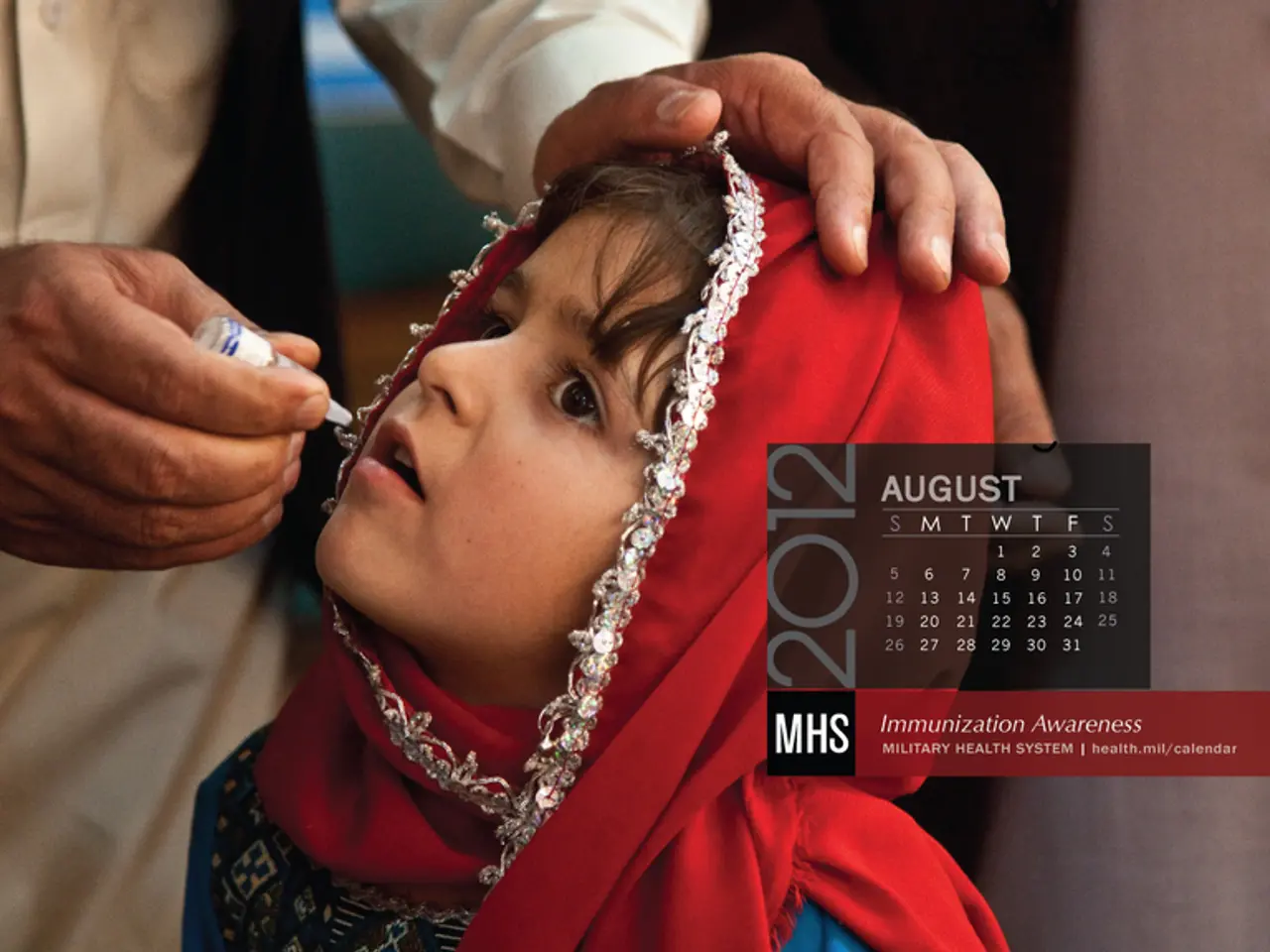Monkeypox Virus: Identified Symptoms, Spread, and Remedial Measures
Mpox, also known as monkeypox, is a viral illness caused by the mpox virus, a type of orthopoxvirus. This virus is related to the smallpox virus but has a lower death rate.
Mpox outbreaks have occurred in several countries in Europe and North America in 2022, and health organizations closely monitor these outbreaks. They conduct laboratory testing, administer vaccinations, track animals that may have the virus, and issue guidance to patients, healthcare professionals, and animal handlers.
Prevention
The core mpox prevention strategy is vaccination for at-risk groups, combined with isolation and careful avoidance of contact with infected individuals or contaminated objects. The currently recommended vaccine is the 2-dose JYNNEOS vaccine, administered 4 weeks apart. It is recommended for individuals with certain risk factors, such as sexual or intimate contact with someone who has or might have mpox, men who have sex with men, and those with multiple sexual partners or recent sexually transmitted infections.
To prevent transmission and exposure, avoid direct skin-to-skin and intimate contact with people who have active mpox rash. Avoid sharing clothing, bed linens, towels, or personal hygiene items that may be contaminated. Isolate infected persons at home or healthcare settings until all lesions have crusted and new skin has formed underneath. Practice hand hygiene with soap and water or alcohol-based sanitizer. Use appropriate personal protective equipment (PPE) when caring for suspected or confirmed mpox patients. Avoid contact with animals that could harbor the virus or contaminated materials.
Transmission
Mpox can be transmitted through direct contact with skin lesions, large respiratory droplets, or other bodily fluids from an infected person. The virus can enter the body through broken skin or mucous membranes inside the mouth, nose, or eyes. Indirect contact with objects an infected person has touched, such as bedding or towels, can also lead to transmission.
Mpox virus droplets do not travel as far through the air as those carrying SARS-CoV-2, the virus that causes COVID-19. Prolonged face-to-face contact is necessary for transmission via large respiratory droplets. Mpox is not a sexually transmitted infection, but any kind of close physical contact between people can spread the virus, whether sexual or not.
Treatment
Most people recover fully within a few weeks with supportive care, which includes managing symptoms and hydration, especially for vulnerable groups like young children, older adults, and those with weakened immune systems. There are no mpox-specific approved treatments routinely used, but some smallpox antivirals (like tecovirimat) might be considered, although their effectiveness for mpox in humans is still uncertain and they are not in routine use yet.
Additional Guidance
People who have received both vaccine doses currently do not need booster doses. Those recovered from mpox generally do not need vaccination as reinfection is rare and milder if it occurs.
In the U.S., a licensed vaccine known as Imvamune, Imvanex, or JYNNEOSTM is available to prevent smallpox or mpox, only for those living in areas where they may become exposed to mpox.
The death rate from mpox depends on the type of mpox virus a person has. While the West African clade has a death rate below 1%, the Central African variety has a death rate of up to 11% in unvaccinated children.
Remember, the best way to protect yourself from mpox is to get vaccinated if you're at risk, practice good hygiene, and avoid close contact with people who are infected or may be infected. If you think you may have been exposed to mpox, seek medical advice promptly.
[1] Centers for Disease Control and Prevention (CDC). (2022). Monkeypox. Retrieved from https://www.cdc.gov/poxvirus/monkeypox/index.html [2] World Health Organization (WHO). (2022). Monkeypox. Retrieved from https://www.who.int/health-topics/monkeypox [3] European Centre for Disease Prevention and Control (ECDC). (2022). Monkeypox. Retrieved from https://www.ecdc.europa.eu/en/monkeypox [4] National Institute of Allergy and Infectious Diseases (NIAID). (2022). Monkeypox. Retrieved from https://www.niaid.nih.gov/diseases-conditions/monkeypox [5] U.S. Food and Drug Administration (FDA). (2022). Vaccines to Prevent Monkeypox. Retrieved from https://www.fda.gov/vaccines-blood-biologics/vaccines/vaccines-prevent-monkeypox
- Monkeypox, in the realm of science and health-and-wellness, continues to be a focus of concern for numerous countries following outbreaks in Europe and North America.
- Amidst the ongoing pandemic fluctuations, health organizations keep a close watch, being particularly interested in sexual-health implications as the virus exhibits a pattern of transmission through close physical contact.
- The fusion of lifestyle and fashion-and-beauty remains relevant as people seek help in understanding the necessary precautions, including skin-care routines, for potential monkeypox exposure.
- As the virus goes viral in pop-culture discourse, social-media platforms buzz with anxiety and questions, offering spaces for people to share experiences and seek updates on the latest developments.
- In the face of uncertainties in treatment options, travel restrictions may become a topic of interest, as passengers opt for extra precautions in minimizing risks during journeys.
- Entertainment providers create awareness campaigns, engaging audiences in creative ways, to encourage the importance of mental-health, vaccination, and disease prevention in the midst of the monkeypox outbreak.





